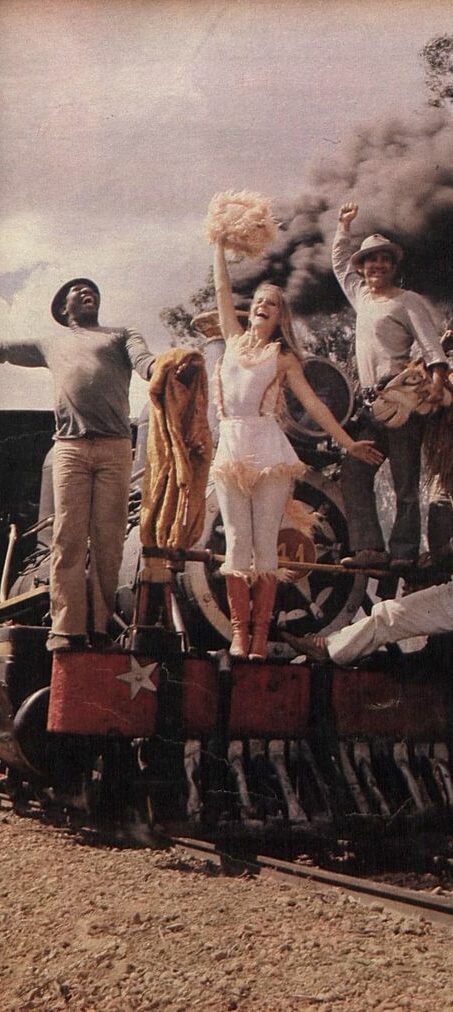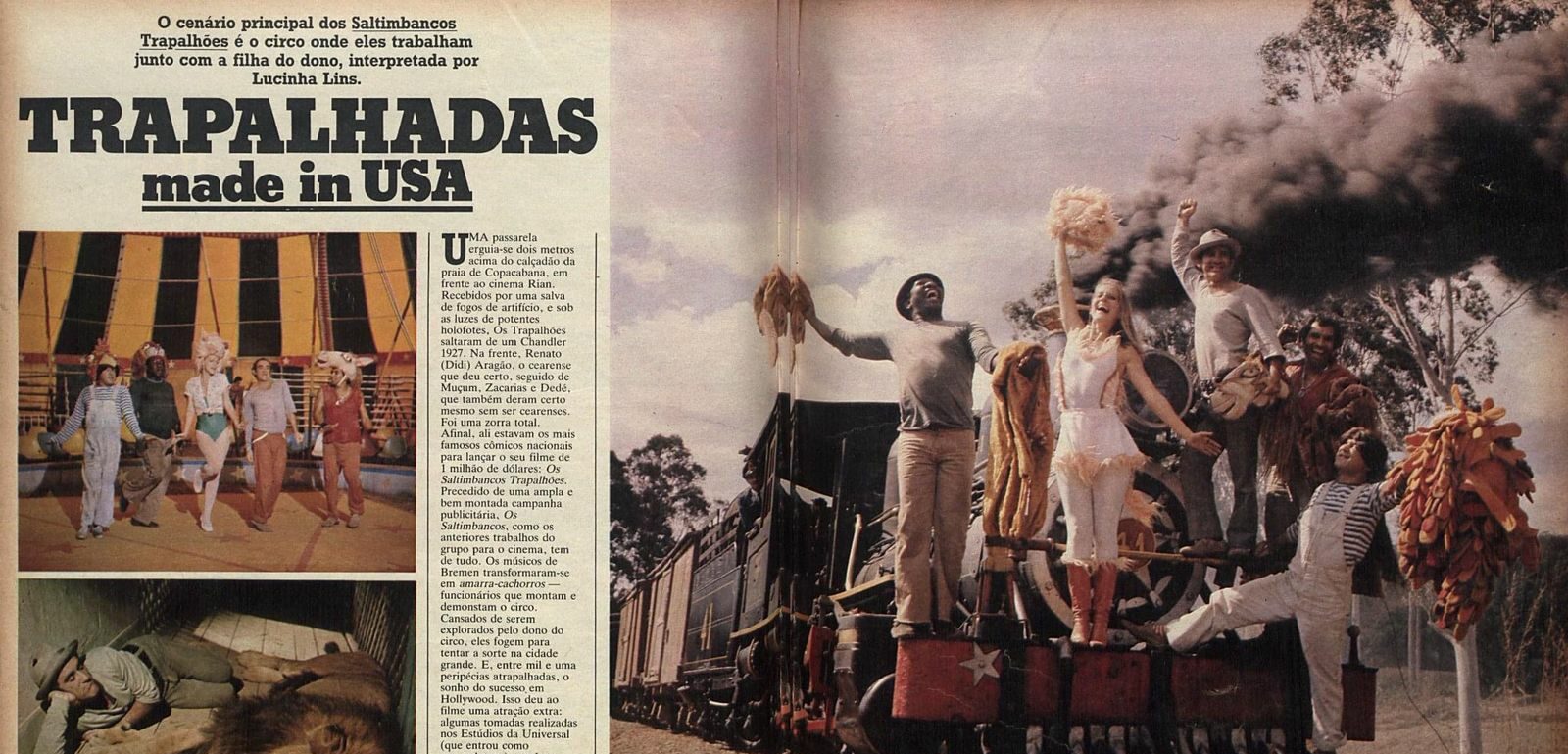Preserve
Preserve – Transport Heritage Preservation Program – was created in 1980 by the Ministry of Transportation. Its mission was to preserve historical artifacts related to the evolution of transportation in Brazil, focusing particularly on locating and identifying documents and items of historical and artistic value, and promoting the restoration of materials and structures significant to the sector's history. In 1981, the agency undertook the cataloging and documentation of the São João del-Rei Complex, a preservation effort that was due to its exceptional significance. This initiative catalyzed community advocacy in support of the complex’s future designation as a heritage site.
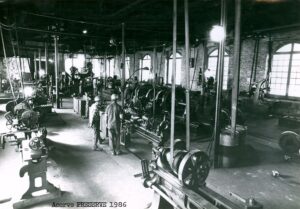
MACHINE SHOPS
PRESERVE, 1986. PRESERVE Collection.

RAILWAY MUSEUM
PRESERVE, 1986. PRESERVE Collection.
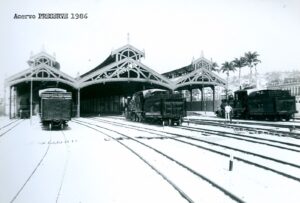
SÃO JOÃO DEL-REI STATION
PRESERVE, 1986. PRESERVE Collection.
The Listing of the São João Train
For many years, the community has been advocating for the section between São João and Tiradentes to be recognized as a Historical and Cultural Heritage site. Its designation would preserve an invaluable asset to local culture and national history. The initial request to list the entire 102 km stretch from São João del-Rei to Antônio Carlos was denied due to its length. A subsequent request was focused on the 12-kilometer stretch to Tiradentes, including the three stations along the way (São João del-Rei, Chagas Dória, and Tiradentes) and the entire Railway Complex, including its locomotives. In 1989, the Complex was officially registered in the Historical Designations Book under entry no. 528, on August 3, 1989, and in the Book of Fine Arts under entry no. 596, on August 3, 1989. This inclusion recognized the complex as an outstanding example of Brazil's industrial-era construction and its unique collection of Baldwin-type locomotives, unparalleled elsewhere.
Railroads as Heritage
The listing of the São João del-Rei Railway Complex was a significant event in Brazilian heritage preservation. Historically, heritage organizations focused on structures from Brazil's colonial period. However, in the second half of the 20th century, discussions within the heritage sector highlighted the railway's value for society, prompting new preservation efforts. This shift led to the inclusion of buildings and collections related to railway and industrial heritage. Facing constant threats, the urgency to protect this heritage intensified. Combined with community advocacy, these efforts culminated in the listing of the São João del-Rei Railway Complex in the Book of Historical Records in 1989.
"Unfortunately, I don't have a photo of the event. We, along with the children from Catavento school, all in uniform, walked to Tiradentes. We displayed a banner that read ‘Keep the train running!'. That day, we held a march and taught the children what it means to participate in one."
Recounting by Maria Lucia, retired teacher and local resident
"At the time, the plan was to halt everything. They wanted to transform this area into a bus station or a parking lot, or something to that effect. Their idea was to completely eliminate the train. The community at the time responded, stood up for the cause, and managed to preserve the train."
Recounting by Alexandre Campos, traction inspector and train driver
Railway Heritage under IPHAN
In 2007, Decree No. 6,018 and Law No. 11,483 established IPHAN's role in managing the artistic, historical, and cultural assets formerly owned by RFFSA. Railway heritage, distinct in its inclusion of operational machinery, prompted the creation of a new protective measure called valuation, specifically for RFFSA's assets. IPHAN is currently responsible for overseeing the preservation of numerous stations, locomotives, and general railway equipment, engaging in research and dissemination activities through its Technical Coordination for Railway Heritage.
The Rebuilding of the Roundhouse
One of the city's pivotal moments in railway heritage protection was the roundhouse reconstruction in 1983. Undertaken with the help of many railway workers, it highlighted the structure's significance to São João. The roundhouse now serves as a public space displaying the city's collection of locomotives and wagons.
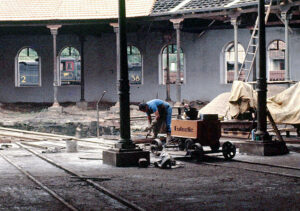
THE REBUILDING OF THE ROUNDHOUSE
Author unknown, 80's. Gustavo Zenquini's personal collection.
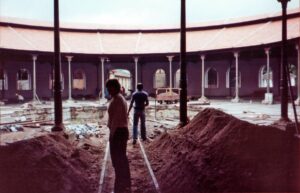
THE REBUILDING OF THE ROUNDHOUSE
Author unknown, 1984. NEOM ABPF Collection.
EFOM Centenary
In July 1981, Estrada de Ferro Oeste de Minas had its 100th anniversary. This milestone initiated several enhancements at the Railway Complex, building on earlier efforts to adapt to declining train demand with various restorations and modifications. Notable changes included dismantling the line extension and the head of station’s house to make way for the new Railwaymen’s Square. Another significant development was the creation of Brazil's first Railway Museum, which was set up in the spaces that previously housed a station warehouse and the roundhouse. These initiatives highlighted the city's dedication to preserving and promoting its railway heritage and the crucial role that Estrada de Ferro Oeste de Minas played in São João's development.

IN SÃO JOÃO DEL-REI, A CENTURY-OLD RAILROAD STILL IN USE
Newspaper O Globo, date unknown. Gustavo Zenquini's personal collection.
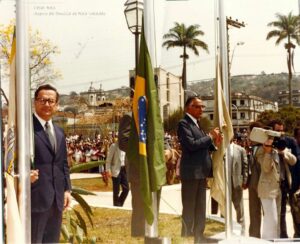
MINISTER ELISEU RESENDE AND GOVERNOR FRANCELINO PEREIRA AT THE INAUGURATION OF THE RAILWAYMEN’S SQUARE
Revista Manchetti [Manchetti Magazine], 1981. Gustavo Zenquini's personal collection.
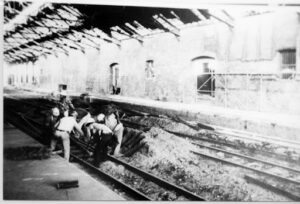
BUILDING THE RAILWAY MUSEUM
Author unknown, 1981. Gustavo Zenquini's personal collection.
Railway Museum in São João Inaugurated!
The opening of the São João del-Rei Railway Museum was a milestone in the preservation of railway heritage. Its inauguration, together with that of Praça dos Ferroviários, took place in 1981, during the EFOM Centenary ceremony. As one of the first railway museums in the country, it focuses on the history of the railway and emphasizes EFOM's impact on Minas Gerais’ development. Its collection includes unique pieces of railway equipment such as lanterns, telegraphs, furniture, and hardware. However, the most notable features are the displayed locomotives and wagons on the platform and in the roundhouse. The highlight is locomotive number 01, which transported Dom Pedro II to the railroad’s inauguration event. Over the years, the museum has become a hub for learning, attracting visitors from all over Brazil and the world who come to experience a ride on Brazil's oldest continuously operating train.
"The number of Americans and British who used to come here to see the locomotives… actually, they still do! Even today, when I go by the Station, I see lots of them getting off to catch the little train. They are passionate about the railway. Since we worked there, we had contact with them. You could see their excitement upon seeing the machines; when they got to the roundhouse, which houses that collection, they were thrilled."
Recounting by José Paiva, retired railway policeman
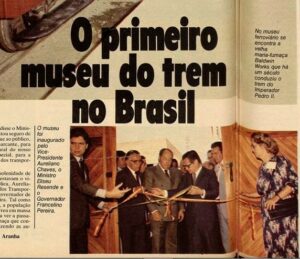
INAUGURATION OF THE RAILWAY MUSEUM AND RAILWAYMEN’S SQUARE
Revista Manchetti [Manchetti Magazine], 1981. Gustavo Zenquini's personal collection.
CAPTION: The newspaper headline mistakenly described the São João del-Rei Railway Museum as the first train museum in Brazil, but the Train Museum or Central Station Capiba had been inaugurated nine years earlier, in 1972, in Recife, Pernambuco.
Trains, affection, and culture
The São João train, more commonly known as "Maria-Fumaça" (Steam Train), is recognized not only as a means of transport but also as a visual and cultural landmark in the city and throughout Brazil. Its image is ubiquitous, appearing in photos, newspapers, soap operas, and mini-series. Maria-Fumaça invites us to ponder: to whom does it really belong? Beyond the companies bearing the names of founders and shareholders, the train also belongs to the people who share their stories and memories with it; it is part of the collective history and memory of the city. The train becomes a part of each person who takes the time to stop, look at it, and listen more attentively.
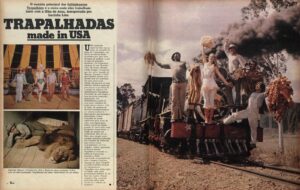
LOCOMOTIVE 41 AND "OS TRAPALHÕES"
Author unknown, date unknown. José Luiz’s personal collection.
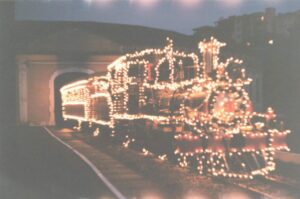
LOCOMOTIVE 21 – LIT UP FOR CHRISTMAS
Author unknown, date unknown. Gustavo Zenquini's personal collection.
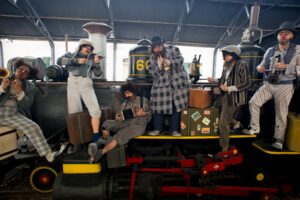
CLOWNS PERFORMING AT THE 25TH WINTER FESTIVAL
Junior Viegas, 2012. Gustavo Zenquini's personal collection.
Tourist Train: Love and Struggle for Preservation
One of the main reasons the São João train continues to operate today is the community's resilience. Citizens of São João del-Rei remain vigilant and proactive against threats to Maria-Fumaça that have persisted since the last century. Through demonstrations, petitions, and reports, the protection of the Railway Complex and its heritage has largely been driven by the citizens' desire to safeguard a part of their history. As long as there are people who delight in seeing Maria-Fumaça chug across the yard, their love and dedication will continue to justify the preservation and operation of the train.
In the past 40 years, Maria-Fumaça, originally intended to reach Rio de Janeiro, now only travels the 12 km between São João del-Rei and Tiradentes. Despite the short distance, it serves as a vivid reminder of our century-old steam train, drawing visitors from all over Brazil and the world.
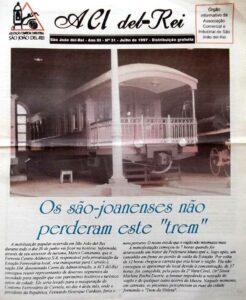
SÃO-JOANENSES DIDN’T "LOSE" THE TRAIN
São João del-Rei Commercial and Industrial Association, July 1997. Antonio Giarola’s personal collection.
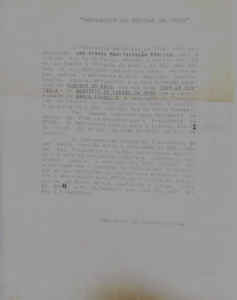
Written Statement from the Train Defense Movement on organizing demonstrations in São João del-Rei, Tiradentes, and Rio de Janeiro.
Movimento de Defesa do Trem (Train Defense Movement), March 1991, IPHAN Tiradentes Collection.

BROCHURE PROMOTING THE TOURIST TRAIN
RFFSA, 1990s. Ramon Coelho’s personal collection.
PEOPLE ON THE TRAIN
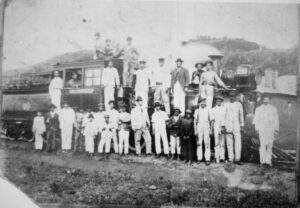
PEOPLE WITH LOCOMOTIVE 1 IN SÃO JOÃO DEL-REI
Author unknown, 1920. Gustavo Zenquini's personal collection.
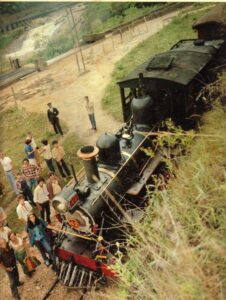
LOCOMOTIVE 42 IN PADRE BRITO
Author unknown, date unknown. Gustavo Zenquini's personal collection.
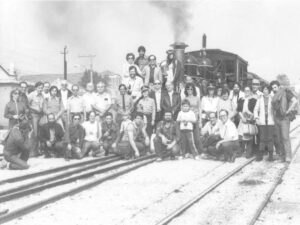
LOCOMOTIVE 21 IN THE SÃO JOÃO DEL-REI YARD
Author unknown, 1981. Gustavo Zenquini's personal collection.
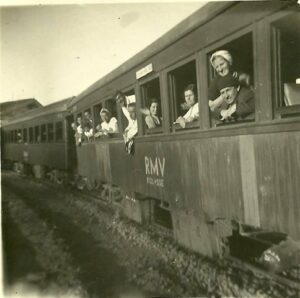
PASSENGERS AT IBITUTINGA STATION
Author unknown, 1949. José Expedito Assunção’s personal collection
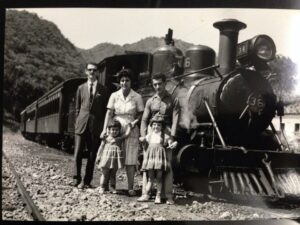
FAMILY WITH LOCOMOTIVE 36 IN ÁGUAS SANTAS
Author unknown, 1959. Ana Maria de Freitas’s personal collection.

PASSENGERS AND TRAIN MASTER
Author unknown, 1981. Gustavo Zenquini's personal collection.
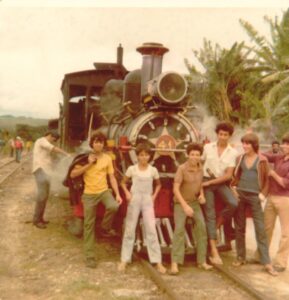
YOUNG PEOPLE WITH LOCOMOTIVE 41 IN SEVERIANO RESENDE
Helvécio Rodrigues, date unknown. Gustavo Zenquini's personal collection.
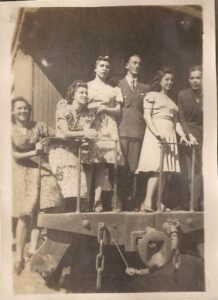
YOUNG PEOPLE IN THE LAST CARRIAGE OF THE TRAIN
Author unknown, date unknown. Gustavo Zenquini's personal collection.
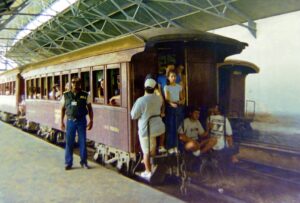
YOUNG PEOPLE IN THE LAST CARRIAGE OF THE TRAIN
Author unknown, date unknown. Gustavo Zenquini's personal collection.








